TURTLE CONCEPTS
INUVIK YOUTH BUILD CONFIDENCE

+ +
LEADING THE WAY WITH INUVIALUKTUN
IRC HOCKEY CHAMPS
SPRING 2009 $4.00














INUVIK YOUTH BUILD CONFIDENCE

+ +
LEADING THE WAY WITH INUVIALUKTUN
IRC HOCKEY CHAMPS
SPRING 2009 $4.00















on a cold day this February, five young Inuvialuit headed north, bouncing along the ice road from Inuvik to Tuktoyaktuk in an old school bus. It was a long trip, almost three hours up the frozen Mackenzie, a river first referred to by its namesake as ‘the big disappointment’. h owever, today was to be about big opportunity.
The students’ destination was the a rctic star base station, part of MGM Energy’s exploration efforts, located where the Mac kenzie Delta meets the Beaufort Sea. It was the final day of the Youth Entry Level s kills program ( y EL s), with the Beaufort-Delta Education Council.



Each year, the oil and Gas component of y EL s brings together a maximum of fifteen students from across the region to Inuvik, to learn about a career in the oil and gas industry. students between the ages of fourteen to twenty-one stay in Inuvik for four weeks. Led by austin a bbot, s kills Coordinator with the Beaufort-Delta Education Council, y EL s covers a wide range of topics related to the industry, including procedures and regulations for the industry, how oil and gas is formed, exploration techniques and drilling operations. There are three weeks of class work followed by a week of job shadowing. The course concludes with a field trip out to the MGM drilling rig.

This field trip provided our students with a little taste of what life is like on a drilling site. Students first had a safety briefing at Veri-Illuq then one more at a rctic star. s afety is paramount, stressed both throughout the course and at the site. Life on a drill rig is about keeping employee risk to a minimum. s afety measures range from workplace risk reports to an industry-wide zero tolerance policy for drug and alcohol use.
Walking up to the rig, it was clear that respect for the environment is important as well. The only time the ground was actually disturbed was when the crew drilled, or when they anchored barges; the rest of the time they worked on ice pads. Environmental policies ranged from drip traps beneath all vehicles to recycling aerosol cans and plastic bottles to minimize disturbance to a pingo near the drill site. By the time the permits expire in mid- a pril, the rigs and camp would be pulled up and almost no trace would remain.
The students watched the drill in action from the operations room, before continuing through the drill site. o ne of the workers, a graduate of the y EL s program, popped his head through the door and shook austin’s hand. h e was an example of the success of the o il and Gas program.

Wayne Ross, regional manager with Veri-Illuq Geophysical and one of the hosts of this field trip, is a strong supporter of the program. Veri-Illuq has been involved with YELS since the beginning. ‘Austin is phenomenal. This is a great program,” said Wayne. “It has the full support of the oil and gas industry. o il and gas is not the only industry to look at, but the oil and gas program provides real building blocks for the future, whatever your goals.’
Each summer, Veri-Illuq offers YELS students the opportunity to fly out to the well-site for a final inspection and clean-up. Wayne explained, "It gives the students an idea of the actual impact of this industry, and a chance to be physically involved in preserving their land. Plus, the helicopter flight really gives you a good feel for the delta."
This year, the entire y EL s program was comprised of Inuvialuit students. Dustin Gordon-Ruben, Vanessa Anakina and Dana Illasiak, all from p aulatuk, keisha Bernhardt from Inuvik and a klavik’s Edward McLeod all received their certificates at a small graduation ceremony in Inuvik.

The p aul steen award, which is presented each year, was awarded to Edward McLeod. This award is in memory of a very special and talented student from Tuktoyaktuk, who attended the program in 2003-04. s oon, the plaque will return from fort Mac p herson, and be on display in a klavik h igh s chool for the coming school year.
The other students spoke too, commenting on the positive atmosphere and coming up with the general consensus that the oil and gas program was ‘great’. Whether or not they pursue a career in this industry, these four weeks have opened up their options and helped them with a career plan.
Wayne’s concluding remarks at the ceremony mirror the program’s goals. h e said, “It’s important to remember that whenever you do something, there will be people to help you…Be positive, stay special and work hard. When you need help, ask for it.”
h e continued, "This was a really good group of kids this year. really worthwhile...I feel privileged to work with these students. Whatever their path, they have a very bright future.” h e added, “…and come see me if you ever need work!”
after the ceremony, it was hugs and handshakes all around. a sked if they were excited to get back to p aulatuk, the response was mostly a smile and jokingly, “I think there’s a blizzard there right now.” s miles have been seen a lot over the course.



Then students headed out, stopping for some last minute packing, grabbing a few Café Gallery muffins for the trip and then to the airport. It was time to head home; not much older but a lot wiser.

Called up for a speech, Edward was asked what he thought of the course. Unassumingly, he started, “When I first joined this course, I have to admit that I was not too excited about it. I used to think of the damage that oil and gas exploration caused to the environment. But, after taking the course, I learned how little they actually impact the environment. Now I am thinking about getting a job with Wayne, maybe on seismic once I finish high school.”
The order of Canada is the centrepiece of Canada’s honours system and recognizes a lifetime of outstanding achievement, dedication to the community, and service to the nation. o n December 30 2008, Governor General of Canada Michaëlle Jean, announced 60 new appointments to the order of Canada. n ellie Cournoyea, CEo/ Chair of the Inuvialuit regional Corporation, and former premier of the n orthwest Territories, was appointed Officer (O.C.), the second highest level in the o rder.
recipients this year came from all sectors in Canadian society, but the contributions that they made have enriched the lives of others and made a difference to the country. There are three distinct levels to the order of Canada; Member, Officer and Companion.
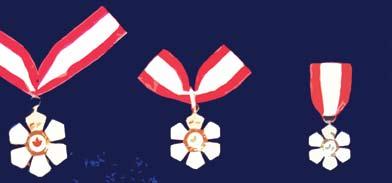
This appointment to the order of Canada recognizes n ellie Cournoyea (pictured left) for her active involvement, in promoting social and economic development for a boriginal people, and for her contributions to political governance in the n orthwest Territories.
Inuvialuit are familiar with n ellie Cournoyea’s efforts over the past five decades to strengthen the identity, culture and economy of n ortherners, and their place in the nation. Nellie is the first native woman to lead a provincial/ territorial government in Canada. h er contributions to the Inuvialuit include the successful negotiation of the Inuvialuit final a greement. n ellie was acclaimed to her seventh term as I rC Chair/ CEo in 2008.

Over the years, Nellie has been awarded a prolific number of awards and honorary doctorates, including the prominent the Governor General’s n orthern Medal, and the a boriginal Business h all of f ame award in 2008. n ellie is also known to be a committed volunteer for Inuvialuit cultural and social causes.
n ellie remains humble despite the accolades she has earned, preferring to recognize and thank the people working alongside her. n ellie has always said, “I might be the one that’s being recognized but I didn’t get there by myself. a lot of the work and success that we had is a result of us working as a team.”
The order of Canada’s motto is DESIDERANTES MELIOREM PATRIAM [They desire a better country]. n ellie shows with her life choices that with courage and dedication, that ideal can be achieved.
once every 3 years, a 42 Directors Meeting is held to bring together voices from all the Inuvialuit communities. Directors of the Inuvialuit regional Corporation (I rC) and its corporations as well as elder and youth representatives convene, to discuss current issues faced by Inuvialuit, and to decide on courses of action that could be taken in the future.

The first of these meetings happened in May 2006. IRC board members wanted formalized, face-to-face meetings with all community corporation directors.
o n february 9th to 12th 2009, the 42 directors from the six Inuvialuit regions met in Inuvik, at the Midnight s un recreation Complex. Topics of discussion ranged from the impact the worldwide recession will have on standards of living, to the roles and mandates of the Elders’ Committees. With so many issues on the table, it was a wonder that everything was accomplished in three days. The meeting was considered a success by all accounts.
Towards the conclusion of the meeting, n ellie Cournoyea, Chair and CEo of I rC called on Marianne Green from p aulatuk to speak.
Marianne had attended the meeting as one of the youth delegates. a s she leaned closer to her microphone, you could hear the pride she felt in being chosen to attend this event.
Members in attendance
Aklavik: Carol D. Arey (Chair), Dennis Arey, Foster Arey, Andrew Gordon Sr., Don D. Storr. Inuvik: Duane Smith (Chair), Ethel Gruben, Roy Ipana, Lucy Kuptana, Jerry Lennie, Edgar Maring. Paulatuk: Gilbert Thrasher Sr. (Chair), Fred Bennett, Debbie Gordon-Ruben, Jonah Nakimayak, Ray Ruben, Andy Thrasher, Millie Thrasher. Sachs Harbour: Manny Kudlak (Chair), Beverly Amos, Earl Esau, Priscilla Haogak, Joe Kudlak, Floyd Lennie, Ryan Lucas. Tuktoyaktuk: Robert B. Gruben (Chair), Eric Cockney, Lucy Cockney, Eddie Dillon, Lennie Emaghok, Charles (Chucky) Gruben, Merven Gruben. Ulukhaktok: Colin Okheena (Chair), Adam Inuktalik, Lillian Kanayok, Richard Notaina, Gilbert Olifie, Joshua Oliktoak.
Youth representatives included: Mary Gordon (Aklavik), Marion Green (Paulatuk), Chelsey Elanik (Sachs Harbour), Lennie Gruben (Tuk) and Margaret Akoakhion (Ulukhaktok).
Elders representatives included: Annie B. Gordon (Aklavik), John Banksland (Inuvik), Lottie Thrasher (Paulatuk), Margaret Carpenter (Sachs Harbour), Jean Gruben (Tuk) and Robert Kuptana (Ulukhaktok).

Staff of Community Corporations in attendance included: Aklavik - Agnes Tardiff, Eva Gordon, Eugene Pascal; Inuvik - Ester J. Allen; Paulatuk - Anne Thrasher; Sachs Harbour - Donna Keogak; and Tuk - Lena Kotokak.
a lthough she was nervous, her words spoke to everyone in the room and they responded with loud applause. Directions to the I rC board that emerged as a result of these meetings are being circulated among the Community Corporations for review and will be brought back to the next board meeting.
“ This has been an amazing opportunity. I never thought I would be able to speak in front of such a large group, but I can…I just want to thank everyone involved for making this such a great experience,” said Marianne.



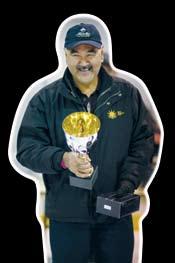




Inuvik was taken over once again this January by keen hockey players and spectators, anxious to be present at the battle for the title of IRC Hockey Cup champion.
The first day was hard for team Paulatuk Storm. Their namesake, the storms that comes through the Paulatuk area, left half their players stormed in and unable to travel. This setback did not slow the Paulatuk players who made it to Inuvik. They lost their first game to the Flames, but they went into shootouts to determine the winner.

There were 13 teams that competed in this year’s tournament. The ‘A’ Division saw the return of some fierce competitors, and the ‘B’ Division saw the return of some favorites. “The Old Dogs are my favorite team,” said elder Emma Dick. “I love watching their games. I try to go to them all.”
Here are some of the tournament highlights. In the ‘B’ Division championship game, Ulukhaktok’s team took on the Old Dogs from Inuvik. It was a well-played game, with plenty of excitement for the fans. Both teams had speedy players and excellent teamwork. With only a onepoint lead, the Old Dogs fought till the end and came out victorious with a score of 4-3.
The ‘A’ Division championship game was also thrilling. The Northwind team from Inuvik and the EGT Nanooks team from Tuktoyaktuk were set to square off once again in the finals. For the last four years, it had always come down to these two teams. They had developed a faithful following of fans. The crowd was roaring; divided between Tuktoyaktuk and Inuvik.
The game started out well for Tuktoyaktuk. Two quick goals gave them an early lead, but Northwind came back with a goal of their own. A third goal for Tuktoyaktuk followed shortly after, and things were looking dim for the Northwind team, but all hope was not lost yet.
At the end of the second period, the score was 3-1 for Tuktoyaktuk.

Just as Brandon predicted, Northwind started the third period with a fire under them. Two quick goals from Northwind tied up the game. Tensions were high, and the fans loved it. Another goal was scored, followed by another goal to tie it up. The teams were neck and neck, and it looked like this one would go into overtime.
With 36 seconds left in the game, Tuktoyaktuk called a time-out; it was time for a pep talk. “We can do this boys, this is our game,” said Jackie Jacobson. The pep talk was short and sweet but it worked. With 11.8 seconds left in the final period, #51 Max Kotokak hit nothing but net and scored the game winning goal.
The celebration started instantly. The fans were on their feet, some cheering on Northwind to tie it up again, and others congratulating Tuktoyaktuk.
11.8 seconds later, the Northwind fans were disappointed, there was no time to catch up; the 2009 IRC champions were crowned.
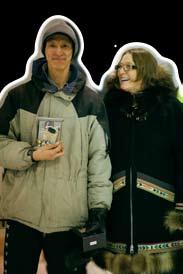
Northwind had comeback to score like that before.
“They always do this,” said Brandon Day, a Northwind fan. “They will come back in the third period and win, just like last year.”Right: Gary Gordon accepts his Division B MVP award from Nellie. Far right: Davie Krengnektak and Jackie Jacobson celebrate their win over Northwind.









Consider yourself unique if you speak Inuvialuktun. It is classified as an endangered language according to statistics Canada. The 2006 a boriginal people s urvey show that less than 800 Inuvialuit can speak Inuvialuktun. a Canadian Cenus study conducted in 2001 stated that only 10% of the Inuvialuit population are able to speak any form of Inuvialuktun; of that 10%, only 4% are able use the language at home. The numbers remained similar in 2006. Language experts are pessimistic about the survival of Inuvialuktun, but the research does not take into account the passion of the Inuvialuit to reclaim the language as their own.


Many individuals are taking up the fight to keep the language alive and well, and their efforts are the light in the darkness, shining through the communities. Enrollments in language classes are on the rise, with people wanting to regain their heritage. s andra Ipana teaches an Inuvialuktun immersion kindergarten class at s ir a lexander Mackenzie s chool in Inuvik during the day and dedicates time in her evenings to teaching the language to adults. “There are many ways we are trying to keep the language going. Evening classes with adults, parents…” she said. “When they come in we ask them for a commitment. Why do they want to join the class? We explore identity and a sense of belonging in our classes. o nce they get into these areas, you can see their pride in the culture is there. you can almost see a transformation within one or two evening classes. At first some people are angry or confused as to why they don’t know their language. a fter they start to get it, they start to learn the tricks, and then it is like they are the smartest Inuvialuit in the world.”
“We are really trying [to revive the language],” she continues. “In the past, even when we were raising our own kids, no one really told us anything. We thought that English was so important, that they needed it to get high grades and graduate. s o it was the way we raised our kids. Maybe they heard Alli, or Alapaa, just those common expressions, but any other language wasn’t really spoken. n ow that we are in the system and we are educated with what is happening with the language overall, it has become a concern for both of us."

“That is why we have stuck it out this long. We are really trying to make other Inuvialuit aware of where we are right now. This year we have a full class of twenty students,” said s andra. “at the kindergarten level, I can’t take on anymore students, because they need that oneon-one time at that age.” s andra has been teaching her kindergarten classes for twenty years. “When I was growing up in the residential schools, everyone spoke English. But when we were in the bush, we didn’t speak English at all. When I went to school I had to learn how to say my name, I couldn’t speak English at all,” said s andra. “They only taught us English so we could communicate. It is funny now though because I was trying to learn English like hell when I went to school here, and now look at me trying to teach Inuvialuktun. fourty years later… funny how time totally switches things.”

Like s andra, Clara Day has been teaching Inuvialuktun classes at s ir a lexander Mackenzie s chool for the past eleven years. Together, they work as a team to reach the students and find new ways to teach the language. “ s o much integration! a nytime we can teach language in a lesson, we try to find a way to fit it in there. We try to integrate it in all our health, math and socials classes,” said Clara.


The language teachers of the Beaufort-Delta region, as well as some elders and language experts attended a language seminar last year. “a lot of new words were added to Inuvialuktun. We are still getting them approved from the elders so we are not using all the words right now, but we are using some of them,” said s andra, “We have new words for many different things, like computer and Ipod. We even went as far to come up with words for when people go to court or the legislative assembly.”
“We were all placed in a room and asked to sit in groups with our dialect. When we were sitting in those groups it was so neat,” recalled a nna pingo, the Inuvialuktun teacher at s amuel h earne s econdary School. “In a snap of your fingers, they were coming up with words for microwave or photocopier. a s soon as someone explained to the elders what the machine did, they would just say ‘ohhhh’, and come up
We hear so much about our language dying.
I told Clara, ‘No more hearing about language dying, we only want to hear about language growing.’
- Sandra IpanaJason Jacobson (L) works on some arts and crafts. Cassidy Lennie-Ipana gets her toothbrush from Mrs. Ipana.
Language experts are pessimistic about the survival of Inuvialuktun, but the research does not take into account the passion of the Inuvialuit to reclaim the language as their own.


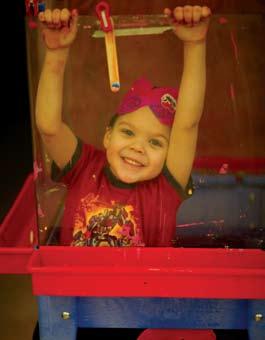
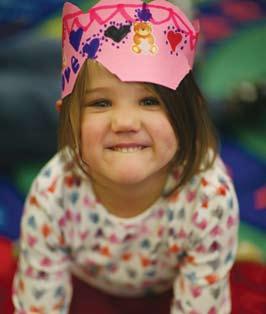
with a word. Even with the word 'computer', they were told it is like a small brain so the name reflects that. It was so cool.”
“ you’d be surprised to hear how many people understand the language, but they are too shy to speak it. This is because of residential school, because we were told there that we were not allowed to speak our language. That makes us afraid to speak it,” said a nna. “It’s so exciting when I find out my friends know the language but they didn’t want others to know this.”
a ll languages go through periods of evolution as circumstances change, and Inuvialuktun is no different. The Inuvialuit have been through some hard times when it comes to language preservation. “There is always language being lost because times change and language evolves,” said s andra.

“When the language was taken away from my grandparents through residential schools and they couldn’t go back to their homeland, they ended up making their home around Tuk,” recalled a nna. “They picked up their language and then we were all surrounded by the s iglit dialect. Trying to change a dialect is like trying to change your
Total population

Note: Mother tongue is the first language learned in childhood and still understood at the time of the 2006 Census.

Inuit language includes all dialects such as Inuktitut, Inuvialuktun, Innuinaqtun, etc.
eye-colour. If people say we should wipe out all the dialects and just choose one, I say to them, you can’t change your eye-colour. you can’t make a person change the language they grew up with.”
“Throughout the years when people speak the language, it changes. Eventually, there are only a few people left that have the old language. You hear people saying things like, ‘Oh yeah, I remember that word. My dad used to use that word.’ s o, you see, it changes over the years,” said a nna.
“We hear so much about our language dying. I told Clara, ‘No more hearing about language dying, we only want to hear about language growing.’ We want to put our focus there, especially for us because we’ve been at this for so long,” added s andra.
“I am really starting to pay more attention to the language. To focus, I worked on my mindset,” said a nna. “I think of all the ways it will help me and my family. Even with my granddaughter, I try to use the language more when I talk to her. It’s really interesting: to say I want to do this, I want to learn the language. If we all just change our views [things will get better]. We need to make the effort and say yes, we really want to learn. o nce we change our mindset, we will start learning.”
 words and photos by Maia Lepage
words and photos by Maia Lepage
Turtle Concepts, a youth empowerment organization, and Samuel Hearne Secondary School invited students from Inuvik to take part in a photoshoot.

Students signed up to publicly state their confidence, to say, “I am proud of myself and my positive choices.”
They took a big step, aware of the risks - of others trying to pull them down when they are in the limelight.
“There is something magical in Inuvik. I think you have all got confidence, I just do not think you have the place to show it yet,” said Dave Jones, founder of Turtle Concepts. he was speaking to students of s amuel h earne s econdary s chool. Dave is a member of the o bjibway nation. h is organization was back in Inuvik for the third time since December 2007, to deliver an empowerment seminar to youth in Inuvik while on a tour of the n orthwest Territories. The goal of Turtle Concepts is to change attitudes towards everyday life. In these seminars, bullying, racism, abuse and other taboo topics are discussed with youth in an open and culturally sensitive environment.
Dave believes that adults do not understand the pressures faced by youth today. h e said, “We think that they are where you and I were, but they are not. The youth today are dealing with so many issues and situations that were just not as common even 5 or 10 years ago.” The powerful messages Turtle Concepts bring to youth are simply stated. Be the best person you can be. Be Confident. Be yourself. The message seemed to reach its audience in Inuvik, as Dave had the ability to communicate that he understood where they were coming from.
Turtle Concepts empowerment seminar was delivered with a “no holds barred” attitude that kept the audience captivated. “When I open my mouth, everyone thinks ‘Oh my God, he just said what no one talks about’,” said Dave, “o ver the past 15 years, the trend has been for ceremonial and spiritual based research to be the only cures. I don’t have to come in and smudge to get respect. I don’t have to come with ponytails or a ribbon shirt. I just come in and I speak from the heart, which is what our culture is supposed to be about.”
a story Dave told is of a man who sees a bucket of crabs. a ll the crabs are trying desperately to get out, but in their anxiety, they pull each other back into the bucket. The man thought to himself: wait a minute, if the crabs worked as a team, they can all escape from the bucket. The story of the crabs reflects the struggles of being a student in school. a s Dave tells the story, students identify with the crabs, and the forces pulling them down as they try to escape and succeed: bullying, name calling, and fighting.
The Turtles created a very high-energy atmosphere that kept everyone guessing what was going to happen next. “It is important to keep kids engaged. You need to find a connection and then you have to reach out to them. If your connection is a popular song, then use it,” said Dave. “In my sessions, I tell the kids that if they need to take a break, then go for a walk and come back in. I talk about some pretty heavy stuff and sometimes it is their story as well. I can’t assume that just because a student walked out, he or she is being disrespectful. In a math class, it might be a bit different, but in my sessions, I talk about hard life stuff and it hits home.”
a long with tough issues, the Turtles bring in some fun and zany antics; demonstrating their confidence by performing dance routines and lipsyncing concerts for the students. students also involve themselves in the shows. It takes a lot of confidence for these youth to get up in front of their peers, but the more they practice expressing themselves in front of others, the more confident they will become.
“We are born with confidence. You need confidence to get selfesteem. Somewhere along the lines we lose both and we need to find a way to get it back,” said Dave.
Cullen McLeod, age 13, came to the seminar to reclaim his pride. h e said, “When I was growing up, I never really had confidence. I was always really shy. I came out so I could build up more confidence and show the real me. I do not want to care what other people think.”
Another participant, Mary Aviugana said, “I came here to try and find something in me that I haven’t found yet.” Crista rogers seemed to have found what she was looking for. s he said, “I came because I never thought I was good enough. I had the worst self-confidence. After Dave Jones came, I had second thoughts and now I am feeling good about myself.”
These students were part of a group of thirty who participated in the Samuel Hearne Secondary School-Turtle Concepts confidence photo shoot. “I’ve used photography all my life. I got my first camera when I was five because I wanted to show the real side of people,” said Dave. “ you see all these photographs of celebrities, and they are all made up, but on the inside they are just like you and I. They still eat, they still burp, and they are just like us. s o I thought, let’s take pictures of confident students and show the world who they really are.”
Students signed up to publicly state their confidence, to say, “I am proud of myself and my positive choices.” They took a big step, aware of the risks - of others trying to pull them down when they are in the limelight. h owever, they feel empowered and are ready to make a statement. Both Turtle Concepts and shss will use the photos in a poster campaign to show how confidence can change lives. Violet Cheena, who is working for Turtle Concepts as conference coordinator for the first time, was glad she took the risk of being in front of a camera.
“I was a really shy person,” she said. “This week, I am leading the runway and doing the posing, dancing around for everyone and speaking out about my story. That is what confidence has done for me. Confidence makes life fun, and it gives you opportunities.”
Dave Jones is proud of the youth who took on the challenge of modeling. He said it took confidence, patience and time, and all the participants should be very proud of their achievements. “The poster is going to make an impact on both the young people, and the elders as well. people are going to see a bercrombie and Gap style imaging, and they are going to ask ‘Who are these kids?’ Well, those kids are from here. Your kids are that confident. People should celebrate what they are confident at. It may be math, it may be muskrat hunting, and it may even be just getting up,” said Dave. “I love Inuvik. The kids are stepping up big time. They are great kids and people need to celebrate that.”
For more information on Turtles Concepts, please log on to www.turtleconcepts.com
“W e are born with confidence. You need confidence to get self-esteem. Somewhere along the lines we lose both and we need to find a way to get it back,” said Dave.
Our Youth are strong, beautiful, kind, talented, confident.
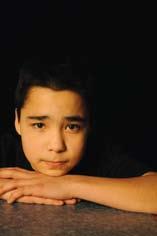
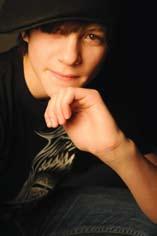
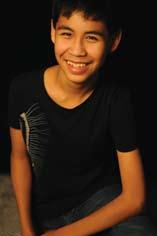
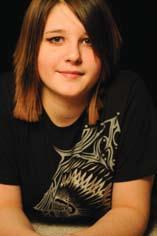
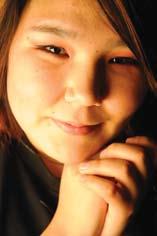


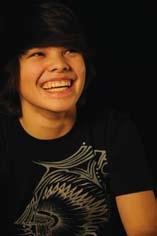

Our boys are strong, reliable, assertive and innovatiive.



Our girls are creative, grounded, intelligent and astute.

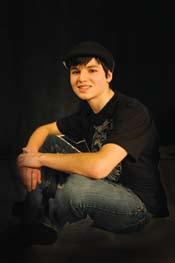







we have found what we were looking for.


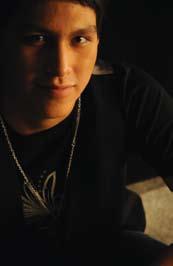


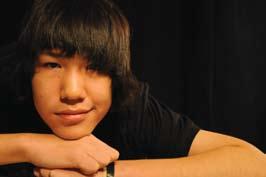



 By Jimmy Ruttan
By Jimmy Ruttan
 Photos by Maia Lepage
Photos by Maia Lepage
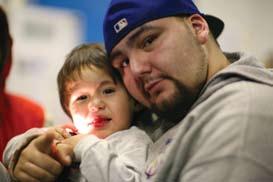
It takes a brave individual to stand up in front of an audience to voice their opinions; it takes an even braver individual to stand up and make a change.
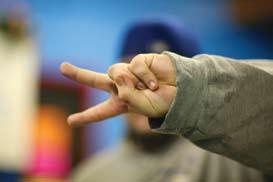 Chelsea Arey (in white) talks about her favorite things about the Jamboree.
Trevor Thrasher
Dene-za Antoine and Wanda Esau.
Teresa Winter, director of IYV (R) and William Greenland.
Connor Bernhardt and Johnny Kaglik
Chelsea Arey (in white) talks about her favorite things about the Jamboree.
Trevor Thrasher
Dene-za Antoine and Wanda Esau.
Teresa Winter, director of IYV (R) and William Greenland.
Connor Bernhardt and Johnny Kaglik
on february 4th, 2009, the Inuvik youth Center (I yC) hosted a live radio event. The youth Council went on-air, and told the world what was on their minds. C k LB radio’s William Greenland, and Dene’za a ntoine from the a boriginal s ports Circle of the Western a rctic led the two-hour youth forum. The main goal of the forum was to increase public awareness on the interests, issues, and concerns of today’s northern youth.


peer pressure and bullying emerged as burning issues for most youth. Teasing and bullying can happen no matter what age you are at; however it can be argued that they cause the most harm when directed towards our young people. youth do not necessarily have the skills and support to handle these problems effectively. Bullying can lead to peer pressure, which can in turn, lead youth down dangerous paths. Both bullying and peer pressure must be fought with positive resilience. We all need to listen to those that speak out, and do what is necessary to provide help and support.
It was evident from the forum that culture and community events are important to the youth. The then upcoming Muskrat Jamboree was a hot topic amongst the youth, who spoke not only of the activities they liked to participate in, but also the ones they loved to watch. Everyone agreed that s kidoo r aces and o ld-Time Dances were among their favourites; both activities bring people together from surrounding communities and everyone has a good time. a nother matter the youth held near and dear to their hearts was the need to keep their culture alive. Everyone agreed that the traditional practices were must-see events. They were glad that muskrat skinning, tea boiling and axe-throwing competitions still take place at the jamborees.
When asked what they wanted to see happen in their community, the overwhelming response from participants was the development of more youth specific programs. Currently there are programs run by the schools and the Inuvik youth Centre, but youth felt more facilities and programs are needed to cater to the needs and wants of all the youth in the community.

This forum also acted as a venue for the youth to showcase their creativity. Songs and readings were played throughout the broadcast, featuring the incredible talent of Inuvik’s youth. All the songs were composed and recorded by the youth in the new Youth Centre recording studio!

The response to the youth forum was tremendous. The C k LB website hosted a blog where listeners could comment. o ne woman remarked that the forum inspired her to return to school, so as to better her understanding of the social issues that youth are facing. s he felt driven to make a difference for the youth. There was also praise from many people across the country, giving accolades to the brave youth that spoke out, for educating us on what they were thinking and experiencing.
It is important that community members listen to youth who are trying to speak out. It takes a brave individual to stand up in front of an audience to voice their opinions; it takes an even braver individual to stand up and make a change. We need to applaud the efforts of our youth and to encourage them to keep making changes that will help improve our combined futures.


 Photos and words by Maia Lepage
Translated by Albert Elias
Photos and words by Maia Lepage
Translated by Albert Elias
On a winter afternoon in Tuktoyaktuk, elder Adam Emaghok was content to stay in his cosy home with his wife, Annie. Yet, as he told stories of his younger days, it is almost as if he remembered in his bones the excitement of living and working outside. He spoke of his early hunting days, “We never went to work in those days, we just lived off the land. We would move from season to season. In the winter, we would stay on the ice to be close to the seals. We would use the seal blubber to keep our igloos warm, we would use the meat for food, and the skins for clothing. When the ice started to get soft, we would move to the land and then walk. We would go to the lakes to go fishing, and we would hunt caribou. It is what we did all the time; we never bought anything from the store.”

In fact, Adam was born outside. “I was born on the ice between Banks Island and Berkley point,” he said. It was an abrupt change to be taken away from his nomadic family in 1935. Adam was one of many aboriginal children who were made to leave home to attend residential school.
“[The teachers] told me that I was in Hay River and then they told me what year it was,” he said. Adam only stayed in Hay River for one year before he was sent to school in Aklavik. School was not the academic experience one might expect. “We didn’t learn much, but enough that we could speak English and write a little bit…we spent our days working instead of going to school,” said Adam. Instead of being in classes, Adam was sent outside to cut wood and bring in water for people in the community.


After leaving school in 1940, Adam began traveling from Tuktoyaktuk to Semmler’s place, just outside of Coppermine. This small outpost “used to [be] a trading post…and there were other places to store stuff,” he said. With the help of Johnny Norberg, who hauled cargo for Semmler, Adam continued his journey to Reid Island where he met his sister and brother-in-law. Reunited with his family, Adam stayed with them for a year before the biggest adventure of his life came beckoning.
The Canadian government purchased a reindeer herd from Alaska in 1929, in response to falling caribou populations in the North. In 1941, Adam was given the chance to return to the land, not as a hunter, but as a reindeer herder.
He recalled, “Having to go and wait all summer for a boat to pick [him] up.” The herders typically worked between the Anderson River and Reindeer Station, herding the reindeers over the tundra to find food. Adam remembered his first days as a herder being hard, “I wasn’t used to it yet…if my parents or my family were close enough to me, I would have gone home on the first night… it was too cold!”
Despite a difficult start and low wages, Adam came to settle into the herder life. He was only given $17 a month, which averages out to about 50 cents a day.
There were many nights when he did not eat. Food depended on whether the herders animals caught animals. He said, “It was hard to get the animals. When we couldn’t get seals or caribous, we lived mostly on fish. When we were hungry, we would try anything.” Adam even recalled eating ptarmigan droppings during desperate times.
Practical by nature, he suggested that those droppings were “the cleanest because [the ptarmigans] only eat willows,” and when no other food was available, it gave the herders enough strength to keep up with the herds.


To conserve energy, herders would use “sled deers”. These reindeer pulled tents and other heavy equipment. “Sometimes the deer would even pull us on skis. It was fun, but you can’t look ahead much. The snow would be flying [in your eyes] and you couldn’t see.”
Working reindeers meant traveling long distances by foot or on skis. “Sometimes it was hard, and sometimes [the reindeer] would get pretty wild.” Reindeer did not always want to go where Adam needed them to go. He said, “They wouldn’t go down steep hills and sometimes, they would just run wild.”
In the winter, skis would help them in harsh conditions. Unlike modern skis, the herders had ones that were three inches wide and seven feet long. Adam recalls being fast on skis, “I could keep up with the herd and could go anywhere! Deep snow was no problem.”
When asked if he skied these days, Adam just laughed and said, “the skis today are too small; you sink in those.”
Adam recalls the best years of reindeer herding to be after Charlie Rufus took over as owner. It was ten years after he began herding, in 1939. The herd was moved to Anderson River. Friendships fostered in the harsh conditions were stronger because the herders had to depend on each other for survival. Adam laughed when he thought about Donald Silastiak, a fellow herder who could out run wolves that tried to attack reindeer.
“Silastiak was a great runner too,” he said. “It was early April; we had nice weather outside. Silastiak was always looking through his binoculars, and this time he saw a wolf off in the distance. He turned his shoes inside out, so it would not make as much noise and he crawled closer to it, making no sound. He had his rifle and he had to walk quite a ways. He got closer and I saw with my binoculars
that he was getting ready to shoot, but the wolf moved. Silastiak ran after him, I could see his tracks. He started running and he started to get closer. When he got closer, he started making noise. We were told that if you yell at something, then it would start to get weak. He got within 100 yards of the wolf; he laid down and and he killed it! He walked home and it took him almost 12 hours [to get back]! He ran really fast.”
However, in the summer of 1944, tragedy struck and Charlie Rufus and eleven of his family members drowned during a storm, while on their way back to the herd. The government regained ownership of the herd following the incident and conditions declined. The government took away the tents and Adam slept outside all year round. “We would stay out with the herd and have a fire and try to keep warm. Some places were good but we couldn’t do that all the time because the herd moves; we had to keep up,” he said.


Adam was a herder for many years and was joined by his wife later in his career. He became good at herding over time, and even liked it eventually. “It was good; I knew what I needed to do. We got to know the reindeer because we were with them all the time,” he said. Adam remembers Charlie Rufus as a good boss. “As soon as it was cold enough, Charlie would give us a tent, things were good.”
Adam and Annie Emaghok now reside in Tuktoyaktuk, and have been married for 58 years. After retiring from herding, Annie worked in a fur shop in Tuktoyaktuk, before taking over as one of the owners. The other owner was Mona Felix. Adam worked for Dome, and Oil and Gas Expediting. Both are retired now, but they look back fondly on their days as reindeer herders.
Silastiak was always looking through his binoculars, and this time he saw a wolf off in the distance. He turned his shoes inside out, so it would not make as much noise and he crawled closer to it, making no sound. He had his rifle and he had to walk quite a ways.He got closer and I saw with my binoculars that he was getting ready to shoot, but the wolf moved.
Ukiumi Tuktuuyaqtuumi, inirniq Adam Emaghok quviasuktuq aimapaluatarami iglumini tuvaaqatinilu Annie. Aglaan quliaqtuarami nukatpiujutimigun, itqagivialuksimagali tajva qanuq itilaanga inuuniaqtuni ingilraan ammalu silami sanalukaaqtuni. Inugurniarutini itqagimaga, “Taimani savagiayuitiugut, nunami kisian tajva inuuniaqtugut. Sanguugaqluta. Ukiumi sikumi inuuniaqpaktuanni natchiit qaglisuklugit. Natchium uqsuinik igluvut auqimavakavut, niqaa niqigiblugu, amingit anuraarivakavut. Siku auqimaakirman nunamun nuutpaktuanni. Pisukluta tatchinun iqaliqiyaqtuqpaktuanni, tuktuliaqlutalu. Tajvatualuk inuusiqput taimani; niuvaayuitugut.”
Adam silami aniyuaq. “Aniyuamiguuq tariumi taunani Banks Islandlu Berkley Pointlu akunrani. “1935mi uvainachiaq alaliyuaq inuusia aulautimagu ilaminin. Inugiaktut taimani nutaqat inuit aulautivagait ilamingnin ilisariaqublugit ilisarvingnun ungasiktuni. “(Ilisaujit) quliutiyaani tajva-guuq Hay River-mi ittunga ukiurlu quliaqlugu.” Atauchimi ukiumi Hay River-mi itqaaqluni Aklavikmun aulautiyat. Ilisarniq taimani alangayuq. “Ilitpalaayuitugut, taniktun uqalasipaluqlutalu aglaknirlu tajvatualuk…ubluk tamaan savaktitpagaini ilisarattarata,” Adam uqaqtuq. Adam tajva qijiqiblunilu imiqtautiblugilu inuit ikayuqpagait.

Ilisarvik qimakamuing 1940-mi, Adam Tuktuuyaqtuumin aulaqiyuaq Semmler’m inaanun, Kugluktum qaningani. Ini mikiyuq“niuvaaviuvangniqtuaq…igluruarniqtuaq inugialaaqtunik.”
Taimani Semmler-m agyaqtigivangniga Johnny Norberg, mallaubluni taimani Reid Island tikinmajung nayani takuyaa ningaunilu. Nayuataqaaqlugit ukiumi atauchimi tiliyauyuatun iliyuaq inuusirmini.
Tuktuirman maani nunaptingni, Canada-m ataniqpait niuviqtuat qunginik Alaskamin 1929-mi. 1941, Adam nunamun utiqtuaq, anguniarluni pilaituq, qungilaanguriaqluni kisian. Puiguyuitka, “Aulaqtinmanga taima aasiin auyakaluk utaqiakiqlunga umiamik” Qungilaat Anderson Rivermlu Reindeer Stationlu akungarni sanguvaktuat taimani. Niriniarvigingman qunginun. Sivulirmik qungilaangurami David sapiqsaqpaktuaq, “Sungiusimailam suli…ilatka qanitpata ainiaraluaqtuami qilamik…alapaa!”

Sapirnaraluaqtilugu tajva David akpautipaluktuaq. Tatqiqsiunmi atauchimi $17.00-mik akiliusiaqpaktuaq, ubluq atausiq 50 cents. Ilaanni sivituyumik nirisiutugut. Niqsarapta kisian nirivaktuanni. “Niryutit sapirnaqlutik. Natchiruangiluni tuktuilamlu, iqaluinarnik inuuvaktuanni. Kaalirapta sunigliqaa napsuiqpakaqput.” Adam puiguyuitka tajva aqijgit anainnik nirivaktuaq suirluaraangamik. Tajva ami anait tamatkuat, “salumaniqsauyuat ami (aqijgit) uvilunin nirivaktuat,” tajvaptauq niqiksaiqttuni , ikayuutauvangminiqtuat, qungit malirulasiblugit.
Qungit qimuktitpagait, ikayuqtigiblugit. Tupqilu uqumaituallu suarrut usiliutiblugit qimukpagait. “Ilaanni ski-nik atuqluta qimuksiqpangmiyuanni. Alianainitualuk, aglaan sivumun qiniqpalaarnailuni. Apun puyuumimaugaqtuq, sumik takunaituq.” Qungilaanguyuni taimani pisukluni ilaanni ski-nik sivituyumik aulanaqtuq. “Ilaanni sapirnaqtuq, ilaaniptauq qungit nuyuaqtusivangmiyuat.” Adam quliarmiyuq tajva qungit ilaanni tusaamasunriqpangmiyuat “Qutchiktunin atqaruyuinmiut, ilaaniptauq nuyuaqtusiblutik.” Ski-nik atuqtuni ukiumi nakuuyuq. Qangmatun ski-t ingitut, taimani silingnitualuit, takivialuktulu. Adam puiguyuituq ski-nik kayumiktuq, “Qungit angumavakatka, sumunliqa aulavaktuami! Mauya sugisuitkiga.” Apirigaptigu suli qangma ski-raqpangmagan, igalakluni kiuyuq, “ski-t qangma mikivalaaqtut, mauniaqtutin.”
 Photos and words by Maia Lepage
Translated by Albert Elias
Photos and words by Maia Lepage
Translated by Albert Elias
Adam puiguyuitkali tajva quviaginiblugu Charlie Rufus inmigun qunginingman 1939-mi. Qungit nuutait Anderson Rivermun. Ilanariiliqlutik tamarmik ikayuqtigiiklutik, taimaligamik suangaktuat. Adam iglaqlunilu Donald Silastiak itqagimaya, amaqutguuq nusulauqluni angumavagait. “Silastiak uqilavialuktuq” Adam piyuaq. “April tikilutigulu; silagiktuq. Qiniraqsimabluni qinirautiminik amaruq takutqaga ungasiaqtumi. Kamangni ulilugik atiyak, qikakpalaarungiluni, paamruqluni qaglimaakiga, nibliqtailiugaqluni. Suputini tigumiaqlugu ungasiktukaluk aulayaksani. Qaglimaung takunaksimagiga uva qinirautipkun siqurnaqigamuing, amaruq aulaqihlaqtuq. Silastiam nutchurigamiung qaglimaakitqaga. Qagligamiung ququakiga. Quliutivagaini tajva nipiguuq anitkaini, sunaliqaaguuq iyangangniaqtuaq! 12 ikaarnirni pisuataqluni aitainaqtuaq! Tajva uqilayuq Silastiak.”


Taima aasiin, 1944 auyami Charlie Rufus 11-lu ilani imaqtauyuat silaqluguutiblugit utiqsaraluaqlutik taavunga qungimingnun. Government utiqtitait qungit, tiguyait inmingnun piblugit. Sunaliqa unmuktuatun iliyuaq. Qungilaat tupiiyaqlugit, taima aasiin Adam silainarmi ukiukaluk sinikpaktuaq. “Qungit nayuataqlugit naniaqluta qiqtailivaktuanni. Ilangit nayuqtavut nakuugaluaqtut qungit aglaan nutqangaugayuilutik; malikpakavut,” Adam uqaqtuq. Adam qungilaanguyuaq sivituyumik taima aasiin tuvaaqatiniktuaq kinguvakun. Savaani ilinamiung sapingitka, nakuugilirmigamiung.”Nakuuyuq; savaara ililugu. Qungit ijusiit ilitavut nayuataqlugit” uqalaktuq. Adam puiguyuitka Charlie Rufus angalatchigami nakuuyuq. “Qiqingutuarman, Charlie-m tupiksaptingnik qaitchivagaini, suliqa nakuuyut.”
Qangma Adam-lu Annie-lu Tuktuuyaqtuumi inuuyuk, 58 ukiuni katimayuk. Qungiliqijairamik, Annie miqurvingmi savakpakaluarami Tuktuuyaqtuumi. Mona Felix-lu savaqatigiikpaktuak. Adam uqsiqiyini savakpakaluarami (Dome, Oil and Gas Expediting). Qangma savajairamik inuusiqtik taimani quviagigak qungilaangugamik.
 Adamlu Annielu ukiumi anuraariktuk.
Adamlu Annielu ukiumi anuraariktuk.

 By David Haogak
By David Haogak
aulavik n ational p ark is located on Banks Island, the most westerly island in Canada. The southern boundary of aulavik n ational p ark is over 200 miles north of the nearest community, s achs h arbour, n orthwest Territories. The park consists of a variety of landscapes from tundra polygons, broad river valleys, to rolling hills and the desert-like badlands. The Thomsen r iver is the heart of aulavik n ational p ark and is said to be the most northerly navigable river in the world. Thousands of muskox journey through the park year round, while over 150 species of birds come to lay nests and raise young during the park’s warmer season.
after years of negotiations between the community of s achs h arbour, the Inuvialuit regional Corporation, the Government of the n orthwest Territories and the Government of Canada, an agreement to establish aulavik n ational p ark was reached on July 16th, 1992. In 1970, peter u sher reported on the economy of the trappers of Banks Island. h is report stated that the locals voluntarily abstained from trapping from the starting of the Bernard r iver in the western side of Banks Island, to Jesse Bay to the east. In the 1970s, it was proposed that aulavik p ark be established on n orthern Banks Island. aulavik represents what the residents of s achs h arbour have always believed in, a place to protect the environment, where the wildlife could replenish itself without being harassed or destroyed.
With oil and gas exploration based at Johnson point on northern Banks Island in the 1970s, a national park on Banks Island did not seem possible then. It took until the Inuvialuit final a greement was signed, and Ivvavik n ational p ark was newly created in the n orth yukon, before the proposed aulavik park could be realized. s ince the Inuvialuit settled their land claim, the people of the Western a rctic have set aside thousands of kilometres of land, to be left pristine in the Inuvialuit Settlement Region. The people of Banks Island would finally see protection for the land they love.
a local s achs h arbour elder, Geddes Wolki named the national park on Banks Island “aulavik” in his native tongue Inuvialuktun. Its meaning symbolizes what he knew and could foresee: “the place where people travel”. for thousands of years the Inuvialuit and their ancestors have taken advantage of natural resources. h undreds of cultural sites along the Thomsen r iver tell of a time when families would move to northern Banks Island to sustain themselves and to gather what was needed for the on-coming season. The island is so remote and vast, so everything was passed on orally, and some families would not see each other till the next season or the season after. Today visitors come to aulavik to experience the wide-open tundra, where hiking possibilities are endless in any direction you look.
The people of the n orth have seen many degrees of change, whether political, climatic, or developmental. a n essential refuge for the delicate arctic ecosystem was needed to refrain all that threatened it. aulavik n ational p ark was created, by the community of s achs h arbour, the Inuvialuit and all Canadians, to be one of these refuges. “The place where people travel” is now a national treasure that will be enjoyed, appreciated and protected into the future.
In cooperation with the community of s achs h arbour and Inuvialuit organizations, the first and current aulavik n ational p ark Management plan was developed in 2002. p arks Canada is to conduct a review of the plan in 2009/2010, and you are invited to express your concerns and supports to aulavik n ational p ark. please watch out for the upcoming review events!

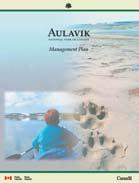


a park management plan is a document that sets out strategic directions for the years ahead. It outlines the national park’s goals and the actions necessary to preserve the natural and cultural resources, offers quality visitor experience, and provides quality public education. Decisions related to land-use, visitor and operation activities, park facilities and services, and research are made based on the most recent management plan.
It is required by legislation that a management plan be reviewed every 5 years to take into consideration local, regional and national changes in the environment, community and economic development.


february marked the beginning of the o lder Worker k itchen h elper program in Tuktoyaktuk, which was held at k itti h all. With the potential development of the pipeline, kitchen workers are foreseen to be in high demand. The program is designed to open up new opportunities for older workers. George Eastman, the course instructor and one of the chefs at E. Gruben’s Transport camp, is very pleased with the community’s reception to this course.

“ people have really gone to bat for this program,” said George, “We have 10 students now but we had 40 students who had really wanted to come to the course. There has been a lot of interest and it has been fantastic.”
The ten lucky students are between the ages of fifty to sixty-five, and out of the ten, only four had previous kitchen experience. “We are going to go through food safety and hygiene for the next 3 days. The food inspector is coming to do the food s afe course, as well,” said George. “We are going to teach everyone how to make soup, bread, pie dough… and then we will hold functions for the community so that the students will also learn how to serve. They are not going to walk out of here as chefs, but they will leave with a certificate that will help them get a job.” a nother aspect of the course is cooking with muskox. “We were bought a brand new a meat grinder and a mixer. We already have a really nice muskox from s achs h arbour that is waiting for us at stanton’s. It is going to be very educational for everyone.”
The course couldn’t have come at a better time in the h amlet of Tuktoyaktuk. “Its really good because there is not a lot of work in the hamlet right now, so it’s been a hurting couple of months. But now, we’ve started this and things are picking up!” said George. The
students receive $100/per day and the course runs over a five-week period. “We’ve been provided with the fancy white coats and hats, it has been really good,” he said.
The future kitchen helpers were also looking to share their good fortune with the community. “We would really like to spread the wealth and involve as many people as possible because we were given quite a bit of money, and everyone should benefit,” said George. “We would like to do a pizza day for the school, and maybe a luncheon for the elders. I am going to do as little as possible, except to observe and help, because you learn by doing, and I want them to learn as much as possible.”
This was George Eastman’s first time teaching, but he said life at camp is similar to school. h e said, “Everyday you are teaching, so it is not that different. I am still excited to be here. We have a really good group of people, and I think the program will work really well.” George also has Martha Voudrach with him to assist. The pair both work at Gruben’s camp. Martha was similarly excited about this oppourtunity.
a long with the basics, by the end of the course, the students will be able to identify differences between fresh produce and canned produce. They will know what food is good for them, and what is better for them. “I wish I had more time for this program. I only have five weeks, but I could easily run four of these courses back to back because of the interest,” said George, “The ten people that are here are the ten lucky ones because there are others that would love to be here.”

Makes 4 portions
2 tbsp Italian s alad Dressing (calorie wise or fat free)
1 can (540 ml) diced tomatoes (or whole tomatoes cut up)
1 tsp garlic powder
1 tbsp chili powder
1 lb ground meat (muskox, moose or caribou)
½ cup chopped onions
½ cup chopped celery
½ cup frozen corn
½ cup green pepper
1 can of chickpeas/kidney beans or black beans (or a mix of beans)
1. Heat dressing in large saucepan on medium-high heat.
2. Add meat; cook and stir until cooked thoroughly. Drain and rinse off fat.
3. Add vegetables; cook 5 minutes until tender, stirring occasionally.
4. Add undrained tomatoes, drained and rinsed beans, garlic powder and chili powder.
5. Mix well. Cook 3 minutes until heated through.

Makes 16 pieces
2½ cups all purpose flour
½ cup wheat bran
1 tbsp baking powder
1 tsp salt
1 tbsp sugar or s plenda (optional)
¼ cup vegetable oil
1 cup water &
3 tbsp skim milk powder or 1 cup skim milk
1. Mix dry ingredients together. * A handful of cranberries, raisins or dried fruit can be added for flavour and added nutrition.
2. Mix oil and prepared milk. Add to flour mixture.
3. Mix to make a soft dough
4. Knead gently five times.
5. Put on baking sheet oiled with cooking spray. Flatten and shape into one 9-inch piece.
6. Bake at 375° for 20 minutes. Cut into 16 pieces.


